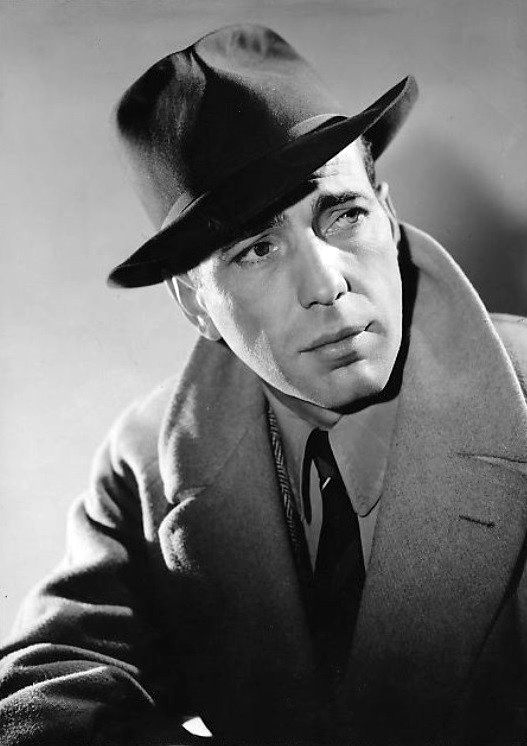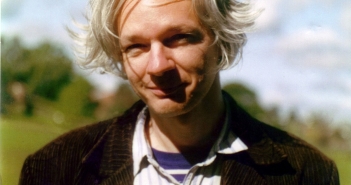As the founder of the now seemingly inactive Irish Innocence Project, and co-founder of The European Innocence Network, I staunchly oppose the death penalty, with exceptions for certain Crimes Against Humanity. I have personally visited and represented individuals on death row in Kenya and the U.S.. This underscores the critical need for our legal system to exercise caution, and precision, to avoid wrongful convictions.
Recently, I have condemned in a Cassandra Voices Podcast the inhumane prospect of Julian Assange enduring indefinite incarceration. This stance does not, however, imply a belief in universal innocence, or countenance a dismissal of deserved punishment. Rather, I advocate for a measured approach to justice, echoing Shakespeare’s notion of ‘measure for measure’ in determining appropriate consequences for actions.
Following an ethical determination of guilt, the central question revolves around what form of punishment is suitable. But before delving into punishment, we must first address the concept of guilt, and whether the guilty evade accountability.
Unfortunately, instances abound of individuals with power or wealth evading justice through various means. Examples include former President Trump and Clinton’s long list of pardons on leaving office, and instances of state officials abusing their authority, as depicted in literature such as Klima’s 1991 novel Judges on Trial. These cases underscore the danger posed by those entrusted with upholding the law manipulating it for personal gain.
David Langwallner begins a two-part series on why people are found guilty of crimes they did not commit dealing with confirmation bias, leading questions etc.https://t.co/N2k7bKiiUI#HateCrimeAct #HateCrime
— CassandraVoices (@VoicesCassandra) April 5, 2024
The Worst Criminal
A state or judicial criminal is often the worst criminal. They have subverted the Rule of Law and the processes they were appointed to uphold. They are professional hypocrites.
In his 1971 detective novel Equal Danger, Leonardo Sciascia demonstrates how in Italy judges may become, by stages, complicit in murder. Chillingly, the President of the Supreme Court intimates to the investigating detective that in condoning murder the judiciary are incapable of error.
Sciascia also documented the complicity of the mafia and Christian Democrats in the murder of God’s banker Roberto Calvi in 1982, and of course the kidnap and murder of the progressive, or incorruptible, Christian Democrat Aldo Moro in 1978.
In Ireland the incident that primarily gave rise to Conor Cruise O’ Brian’s immortal phrase GUBU (grotesque, unbelievable, bizarre and unprecedented) was the murderer of the nurse Bridie Gargan and the farmer Dónal Dunne in 1982. The murderer Malcolm McArthur was discovered on the private property of then Attorney General Patrick Connolly.
Not uniquely in Ireland, the powerful avoid and do not accept responsibility for their actions and may resort to framing others. Voltaire, the earliest expert in miscarriages of justice coined the phrase per encourager les autres, to deal with the scapegoating of Admiral Pyle by the establishment.
Political criminals also enact laws to protect their interests. The new Hate Crimes Bill in Ireland is finally being opposed by SF as they have recognised the danger it poses.
Human Rights barrister David Langwallner weighs up Ireland's new hate law legislation. He fears certain measures will be used to stifle debate and ridicule.https://t.co/xgF8GrA5Yv@liamherrick @cilliandoyle87 @paulmurphy_TD @paddycosgrave @bergormanlowry @EwanMacKenna
— CassandraVoices (@VoicesCassandra) May 11, 2023
Foundational Tenet
The legal principle of ‘presumed innocent until proven guilty beyond reasonable doubt,’ as established in the case of Woolmington v DPP (1935), serves as a foundational tenet. Yet, challenges arise, particularly regarding the interpretation of evidence and credibility of assessments.
In every case I have recently conducted the same question is asked by jurors: “is sure the same as beyond all reasonable doubt?” Judge rightly say yes, and try to avoid further questioning to avoid being buried in semantics.
Of course, the crucial point is that unless someone tells a defence lawyer he or she is guilty – in which case you either withdraw or can only defend by challenging the prosecution evidence without asserting innocence – you cannot know definitively.
Cognitive bias cuts all sorts of ways. A defence lawyer should be timorous about getting a client to plead guilty if there is any doubt. Not least, many clients are vulnerable and inclined to please authority and, as has happened in my experience, defendants may seek to change their plea.
The intersection of morality and legality further complicates matters. It is essential to caution against conflating moral judgment with legal culpability. Instances of moral condemnation influencing legal proceedings – as seen in the admission of bad character evidence – highlight the need for a nuanced approach.
A feature of my speeches is to caution a jury not to confuse morality with legality. Moral condemnation is often used by the prosecution to smear the accused, and the previous bad character admissions ushered in by Blair in the U.K. opens that gateway.
In Ireland, however, the exclusion of bad character is not a good idea. Evidence of bad character is only inadmissible in certain defined exceptions, such as if one puts one’s good character in evidence. There should be more of a halfway house.
Despite efforts to discern guilt, the process remains fraught with challenges. Guilty individuals often resort to elaborate tactics to obfuscate the truth, necessitating a vigilant approach from their lawyers. Additionally, societal biases and institutional pressures can influence witness testimony and judicial outcomes.
In the pursuit of justice, it is crucial to distinguish between genuine miscarriages of justice and rightful accountability. While liberal objections to wrongful convictions are warranted, there are instances where the punishment must align with the severity of the crime. The case of the Moors Murderers 1963-65, Ian Brady and Myra Hindley, serves as a poignant example of criminals rightfully facing lifelong imprisonment.
Reluctantly, it must be conceded many are guilty. And it is sometimes very difficult to get them to accept their guilt. Even my great hero Clarence Darrow ‘Attorney for the Damned’ represented Leopold and Loeb, who in a nihilistic fashion attempted to kill another young man simply to prove they could get away with it. As in the Jamie Bolger case. Darrow knew they were guilty and avoided an insanity plea. Instead, he made the greatest plea in mitigation in the recorded legal annals to avoid the death penalty. But they did do it.

Lucy Letby mugshot.
Nurse Letby Case
The recent case of Nurse Lucy Letby who was found guilty of murdering seven infants in Manchester crown court in 2023 is instructive.
She is not the first Mancunium serial killer. Between 1963-65 in Saddleworth Moor near Manchester Mancunians Ian Brady and Myra Hindley murdered innocent children. It is noticeable that they were also influenced by the film ‘Compulsion‘ documenting the Leopold and Loeb case.
Working on a recent case in Manchester, I resisted the temptation to visit the moors, but did pass by Market Street, Cheshire where another notorious murderer, the serial killer and doctor, erstwhile respectability known as Harold Shipman had his surgery. In this case a later inquiry revealed the police should have acted sooner. So, one should not always attack the police.
And there is some evidence in Nurse Letby’s case that the NHS, in collective group think, buried their heads in the sand as the evidence accumulated. They were protecting the guilty through cognitive bias. A consultant who gave evidence in her case said lives could have been saved if there was not a cover up to preserve institutional reputation. Thus, in fairness, state officials, doctors and police officers are often hit from both sides: damned if they do; damned if they don’t.
I have represented clients in several cases where due to witness reluctance or external pressures, the police have taken the action of NFA (No Further Action), which they have come to regret.

The cheaper the crook…
So, what are the hallmarks of guilt? It is surprisingly difficult to work out. One crucial sign is perhaps, as the American actor Humphrey Bogart said: ‘the cheaper the crook the gaudier the patter.’ Overly complex explanations are often a sign of guilt.
The patter includes: convoluted challenges to police evidence gathering and exercise of due diligence on instruction; excessive casting of doubt on overwhelming expert evidence; elaborate excuses for extreme violence based on self-defence; and inappropriate allegations of police misconduct.
Now the process must be tested and many wish to save their skins. Those who are desperate will often resort to anything, and the defence lawyer on instructions often must facilitate this.
I remember how both myself and Adrian Hardiman were tarred with damnation, overlooking constitutional niceties, in the constitutional challenge to The Proceeds of Crime Act as lawyers for Gilligan by the Sunday Independent.
A trial process weighs up whether evidence is relevant or not, and whether there is a case to be answered. The question of whether a case should have been brought in the first place is a different matter.
Legal representatives may also argue over whether there has been an abuse of process through non-disclosure, non-compliance or a fit up. In this respect the absence of video or phone evidence is crucial. Once confronted, a guilty person may tangle themselves up in lies, which affects their credibility when giving evidence
A witness who is lying must avoid the truth and is often lulled by persistent questioning into the trap of telling the truth by indirection.
Thus, the prosecuting barrister Edward Carson, after listening to days of Oscar Wildes’ ridicule at his trial for gross indecency in 1895, popped the surprise question – a deadly weapon to be sparingly used in the barrister’s art – about the boy Grainger.
Did you Kiss him?
The answer which leads to the Reading Gaol and early death in Paris was:
Oh no he was far too ugly.
It must be stressed that the credibility of a witness must be read in the context of the vulnerable person they may be. Some suffer from addiction and mental health issues, which is not to say they are not telling the truth.
Sadly, in a world of increasing subjectivism and loss of truth those who lie may have been telling the truth as they see it, or as they remember it, but not as a fact. Witnesses for defence and prosecution also have intellectual masking to justify in their own mind what they have done. Everyone, as Voltaire indicated, has their reasons.

Anti-social Media
In our time, text evidence from social media and other digital uploads such as chat lines are often very incriminating. The utilisation of social media can have disastrous consequences as historic texts and chats can come back to haunt you. They might demonstrate a propensity as a prelude or aftermath to an incident, and they often show planning, ostensible grooming or worse still acceptance. But comments of a salacious nature in isolation can be magnified by unscrupulous prosecutors.
Scurrilous tactics are never justified, but tarnished evidence is often admitted. I am no fan of racist vigilante groups or engaging in quasi entrapment, but I recognise that sometimes they catch people who are guilty, or, more ambiguously, exhibit certain traits.
Video evidence often confronts someone with what they really did under the influence and normally leads to a quick acceptance of responsibility.
What happens next has been characterised by Oliver Wendell Holmes as the ‘bad man’ of law:
If you want to know the law and nothing else, you must look at it as a bad man, who cares only for the material consequences which such knowledge enables him to predict, and not as a good one, who finds his reasons for conduct, whether inside the law or outside of it, in the vaguer sanctions of conscience.
The legal process is often unforgiving, albeit this is necessary at times.
I do not believe in punishment as denunciation, or retribution where guilt and sin are confused, such as occurred in the sentencing of Roger Casement to death.
With respect to what the British call just and proportionate punishment, I had the privilege of inspecting a Norwegian prison when attending a death penalty conference in Oslo. The tennis courts, swimming pools, private rooms discourage recidivism and potentially rehabilitate criminals.
The Court of Appeal in the UK in R v. Ali (2023) is actively discouraging judges from sending people to prison, not least in congested post-Covid times. Most come out not wiser, but weaker.
But let us also be conscious of the appropriate punishment for the massacre of the innocents. Not all who claim a miscarriage has occurred are victims. There is a time for a liberal objection to a miscarriage of justice, and a time for when the punishment should fit the crime. Even the Norwegian prison system struggled with the serial killer Anders Breivik, who they had to build a special facility for.
I wonder will certain lawyers, businessmen or lawyers ever see justice? Not likely, apart from a few subordinates thrown to the wolves. This was the pattern of our banking prosecutions. The rich can retain the best lawyers and engage in plausible deniability, and a chain of command.
Thus, corporate lawyers, judges and businessmen, as well as puppet politicians, have the justice game rigged, up to the point where they commit murder. Then of course the system must react? This may become a pertinent question for Ireland in the coming months.




